Table of Contents
- What is a DLP projector?
- Benefits and drawbacks of DLP projectors
- What is an LCD projector?
- Benefits and drawbacks of LCD projectors
- Side-by-side comparison: DLP projectors vs. LCD projectors
- Wrapping It Up
When looking for that perfect projector, you are bound to come across the dlp vs lcd projector debate. While the decision to pick a projector over a big-screen TV comes easily, things get confusing when you start looking into the technologies that power the projectors of today.
These have a direct impact on how well a device works for particular functions. For instance, while some projectors are built to serve the big screen needs of a home setup, others are ideal for commercial usage and still others are designed to offer peak performance on the go.
The type of technology also has a direct bearing on the overall performance of the projector, image quality, ease of use, and portability. So, continue reading to know how an LCD projector works vis-à-vis a DLP projector and how the technology impacts the viewing experience these gadgets offer.
What is a DLP projector?
Portable, lightweight, and reliable, DLP (Digital Light Processing) projectors are powered by a technology that is older than LCD technology. Yet, these projectors continue to be popular in both the commercial and residential front projection segments. In fact, 85% of all movie theaters use DLP projectors.
How does a DLP projector work?
The process starts with the emission of a light beam from a source (either laser or LED). This beam is fed to a spinning color wheel. As it exits the color wheel it falls on a DLP chip. This chip can comprise 2 million or more microscopic mirrors.
Each of these tiny mirrors represents a pixel and is designed to move towards or away from the source of light to create a darker or lighter shade of the same color.
The image thus created is then fed through the lens of the projector and is transmitted onto a projection screen on which it is reflected as the intended image.
A single-chip DLP can deliver well over 16 million colors. A 3-chip DLP projector in which the light beam is split into the 3 primary colors before each colored beam is fed to its own DLP chip delivers a massive 35 trillion colors and as many pixels leading to extremely vibrant and sharp images.
Where would you typically use a DLP projector?
Single-chip DLP projectors are frequently used in home theater setups, conference rooms, and even educational establishments. But, advancements in DLP technology have lowered the prices enough to allow for the introduction of 3-chip DLP projectors for non-commercial users.
The DLP projectors used in movie theaters are almost always 3-chip models.
Having said that, given the portability afforded by DLP technology, single-chip DLP projectors are also used for on-the-move visual applications such as pocket or pico projectors.
Benefits and drawbacks of DLP projectors

Benefits of DLP projectors
Sharper Resolution: The resolution offered by a DLP projector, even a single chip unit, is at least twice that of the resolution provided by an LCD projector. Higher resolution means those many more pixels packed into a square inch of space which translates to sharper and crisper images.
Higher Contrast Ratio: This is one of the most significant benefits of DLP projectors. Unlike LCD technology, DLP leads to the generation of true black and true white. So, you don't have to settle for varying shades of gray.
Along with black and white areas of the image, this also has an impact on how colored segments are displayed. The availability of true black means that darker shades of the same color are displayed more realistically.
Similarly, lighter shades are displayed more brightly. The contrast this creates leads to a more vivid, vibrant and life-like picture quality.
Color uniformity: This is another area in which DLP technology has an edge over LCD. The colors are more uniformly displayed across the screen, right from the center to the very edges.
Portability: Despite the moving parts, the use of a single chip offers greater portability and lower overall weight. So, DLP projectors are often offered in pocket-sized and even portable versions that can simply be carried along wherever you go.
Reliability: Because DLP projectors have fewer parts, they require very little maintenance. Moreover, they aren't prone to damage due to dust accumulation because the image-generating elements are sealed. So, these devices are far more reliable than LCD projectors.
Lesser Pixelation: Because the technology harnesses the reflective power of millions of microscopic mirrors, images are smoother with almost nil pixelation.
Long life: The DLP chip used in these projectors is sealed. So, exposure to external elements and dust is limited. This translates to lower degradation and a longer lifespan. Moreover, new-age DLP projectors use LED or laser as the source of light. In both cases, you get a lamp life of at least 25,000 hours. This is significantly longer than the 2000-3000 hour lifespan of Xenon bulbs.
Drawbacks of DLP projectors
Rainbow effect: The use of a color wheel in DLP projectors is what leads to the rainbow or color separation effect. This refers to a fault in DLP technology that leads to the momentary formation of multicolor bands that look like a rainbow across the image.
Although the effect persists only for an instant and is random, some people are more sensitive to it than others. Having said that, the rainbow effect is almost a non-issue now given the use of 3-chips in several DLP projectors. Because these are coupled with 4x the color wheel rotation speed of a single chip unit, the rainbow effect is almost nonexistent in these projectors.
Light leakage (Low utilization of light source): This is, again, a problem that you are unlikely to encounter with newer DLP projector models. Light leakage refers to a gray band that forms around images owing to the reflection of stray light off the edges of the microscopic mirrors. Even with older model DLP projectors, this issue can easily be sorted by using a screen with a black border that effectively hides the gray band.
What is an LCD projector?
In terms of image formation technology, an LCD projector is no different from watches and other electronic devices that use LCD or Liquid Crystal Display display screens.
How does an LCD projector work?
Like in a DLP projector, a source of light either laser or a lamp or LED is used for the emission of a beam of white light. This light beam is projected onto a prism or mirror which splits it into 3 primary colors. These colored beams are further fed to 3 separate LCD panels. Hence the term 3LCD.
As the light beams get projected onto the LCD panels, the pixels open or close completely or partially as is required to allow just the right amount of light through the panel or to block the light out entirely. These separate colors are then fed to another prism in which they converge to form an image. This image is then transmitted through the lens of the unit and projected onto the screen.
Where would you typically use an LCD projector?
Because LCD projectors tend to be bulky and do not offer the high degree of contrast that DLP projectors are capable of producing, they are seldom used in movie theaters.
Usually, LCD projectors are limited to office setups and academic establishments because their transmissive technology allows them to offer brighter images compared to DLP projectors. So, they are better suited for presentations and seminars. They are also a big hit with DIYers and hobbyists.
Benefits and drawbacks of LCD projectors
Benefits of LCD projectors
Color saturation: When a color bar is displayed by an LCD projector the colors come across brighter despite the tilt towards under-saturated pastels. In fact, highlights are almost blown out in the images from LCD projectors. Yet, lower brightness and conspicuous color inaccuracies in the images from a DLP projector make the performance of an LCD unit seem better.
However, manufacturers like WeMax have remedied this problem by combining ALDP and DLP technologies. This leads to a wider color gamut that increases color accuracy.
When you factor this into the color saturation equation, you are left with only one shortcoming- The brightness of the image. That too is remedied by the use of ALDP technology which offers a higher lumen output for a given wattage.
Affordable: The biggest advantage of LCD projectors is their affordability. Quite often, a high-end, 3-chip DLP projector will cost significantly more than an LCD projector.
High utilization rate of light source: At the same wattage, you can get brighter images with LCD technology than with DLP. So, you could say that LCD projectors inherently offer greater light efficiency. So, these devices tend to have lower wattage lamps, which leads to lower operational costs.
Drawbacks of LCD projectors
Screen door effect: The images produced by LCD projectors are not just sharper but also brighter. So, the pixelation of the image is that much more pronounced leading to a chicken wiring or screen door effect.
Contrast: LCD projectors do not produce the deep blacks that DLP projectors offer. This leads to a lower contrast ratio and more washed-out highlights. But manufacturers are trying to overcome this issue with higher resolutions which pack in more pixels per square inch. The net effect is higher color saturation and accuracy and lower pixelation
Bulky: Because LCD projectors have more parts per unit than DLP projectors, they tend to be bulky and heavy. So, you won't find portable projectors that use this technology.
Image degradation: Given the higher number of components used in LCD projectors, they are more susceptible to failure due to individual component damage. Also, the technology itself is prone to image degradation over long-term use, which leads to a permanent shift in color balance and a significant reduction in contrast.
Unfortunately, the only way to correct these issues is by changing the degraded LCD panels. But these panels are expensive, so LCD projectors have both a higher propensity for image degradation as well as higher maintenance cost.
Dead pixels: Another inherent issue with LCD technology is pixel burnout or dead pixels. Normally, the pixels are either partially or completely open or closed to accommodate the required passage or blocking of light.
However, over time, the pixels tend to get jammed in a particular position. Once this happens, the faulty pixel stays permanently on or off. Although a single faulty pixel won't create too much of a problem when a cluster of pixels malfunctions, it can lead to visible black or white spots on the screen or even blurred images.
Side-by-side Comparison: DLP Projector vs. LCD Projector

Technology
DLP is an older technology that uses thousands of microscopic mirrors in conjunction with a light source to reflect different colors thus relaying digital information in the form of moving images on any surface.
LCD projectors use glass that acts as a prism to split white light into 3 colors which are then used to transmit digital images on a screen.
Notes: Simply put, while DLP is a reflective technology that uses moving components, LCD is a transmissive technology that uses static components.
Resolution
DLP projectors like the WEMAX Nova scale this performance metric with 4k resolution, which is 2160p.
LCD projectors offer a resolution of 1024x768, which is basically 720p.
Notes: So, you get 3 times the resolution with a DLP projector as compared to the top-of-the-line 3LCD products. On screen, this translates to cinema-grade clarity and image quality and of course a profoundly superior viewing experience.
Contrast ratio
DLP projectors are far superior even to 3 LCD projectors as they project blacker blacks and hence more vibrant and clear whites.
With LCD projectors, you have to settle for a spectrum of grays instead of true black.
Notes: This not only impacts how you see black and white images but also how clearly and vividly the darker and lighter shades of the same hues are reflected on screen. It goes without saying that a higher contrast ratio leads to sharper, clearer and crisper images and more realistic image quality.
Color uniformity
DLP projectors outperform LCD units by a significant margin when it comes to color uniformity because DLP projectors manipulate individual pixels which are controlled through one micromirror dedicated to each pixel.
The images produced by an LCD projector come across as too heavy or packed in the center and often have some amount of fading towards the corners of the image.
Light source
Top-notch DLP projectors like the WEMAX Nova use 5000-lumen laser as their light source which brings a whopping 25,000 hours of lamp life to the table.
LCD projectors, even the more popular products in the market use metal halide lamps as their light source. The lifespan of these lamps is rarely more than 5000 hours.
Color production
DLP projectors offer immaculate color production as well as color accuracy, particularly products like the WEMAX Nova that incorporate cutting-edge ALPD technology offer a wider color gamut, which leads to enhanced color accuracy and brightness.
LCD projectors have adequate color gamut but adjustable accuracy settings, which means that color production can be quite impressive; however, you are likely to have a blue/green bias when it comes to white and gray. This is particularly conspicuous in the presentation mode of LCD projectors or when the unit is used to display static images.
Pixel visibility
DLP projectors continue to have a far better pixel fill rate, so the images projected by these units are not prone to the chicken wire or screen door effect.
LCD projectors, despite the significant advancements in this technology, continue to have higher pixel visibility as compared to DLP projectors. This is not to say that things look as bad as they did with low-resolution LCD projectors of the past.
Over the last decade, inter-pixel gaps have been brought down by increasing physical resolution. However, the increase in pixelation has created its own set of issues in the form of a greater propensity for pixel burnout.
Durability and Maintenance
The sealed chips used in DLP projectors make them less prone to dust-related damage. Also, the use of microscopic mirrors instead of pixels means that there is almost no scope for pixel burnout.
LCD projectors are high-maintenance units that require regular filter changes to prevent the buildup of dust inside the body which can lead to component damage and unit failure. Even if you are diligent about keeping the unit clean, the problem with pixel burnout reduces the overall durability of LCD projectors.
Portability and Size
The use of microchip technology means that DLP units, unlike their LCD counterparts, are also available in portable and/or pocket-sized models.
With 3 glass panels, LCD projectors are understandably bigger and heavier than DLP projectors.
Usage
DLP projectors provide all-rounder functionality across many activities.
LCD projectors tend to be more suitable for presentations and academic and professional use.
Notes: These projectors are just as popular in home entertainment setups as they are in offices and movie theaters.
Price
DLP projectors cost more but they need little to no maintenance. Moreover, there is no degradation in image quality over time. Plus, the longer lifespan offered by laser light sources means that you don't have to worry about frequent lamp change. Together these factors increase the cost-effectiveness of DLP projectors.
Typically, LCD projectors are cheaper than DLP projectors but some high-end 3LCD products cost just as much as comparable DLP projectors. However, the higher maintenance requirement of LCD projectors and the inevitable degradation in image quality over time bring down the cost-effectiveness of LCD units.
Mounting location
The distance between the lens of the projector and the projection screen for the proper display of images is not technology specific, rather it depends on the throw of the unit. For instance, an ultra-short throw projector, be it an LCD or DLP unit can be placed a mere 45 cm from the screen and you would still get crystal clear picture quality.
So, these units can be placed on a table or pedestal a couple of inches away from the projection screen or you could ceiling mount it no more than a few feet away from the projection surface.
Wrapping It Up
All in all, a DLP projector is better suited for home theater applications than an LCD projector. However, if the initial cost is a factor, then an LCD projector will be a more appropriate choice. That said, in the long run when you factor in the durability of the unit and the maintenance cost, you will get better ROI from a DLP projector than an LCD unit.
Also, you need to consider that most drawbacks associated with DLP technology like lower brightness and color accuracy have been remedied by industry leaders like WeMax. Through the innovative combination of DLP and ALDP technologies. WeMax has managed to eliminate most of the common problems associated with DLP technology.
So a high-end product like the WEMAX Nova 4K UST laser projector can truly transform your home entertainment experience by bringing cinematic-grade excellence to your home theater setup.
WEMAX is the leading brand for laser projectors, portable projectors, LED projectors, and projector screens of all sizes that provide a real home theater experience.
Related Blogs from WEMAX
4K vs. 1080p Projector Comparison: Is a 4K projector better than 1080p?
LED vs. Laser Projector–Which Is Better?
Be the first to know the latest updates, tips, how-tos, exclusive deals, and discounts from WEMAX. Sign up for our newsletter today!


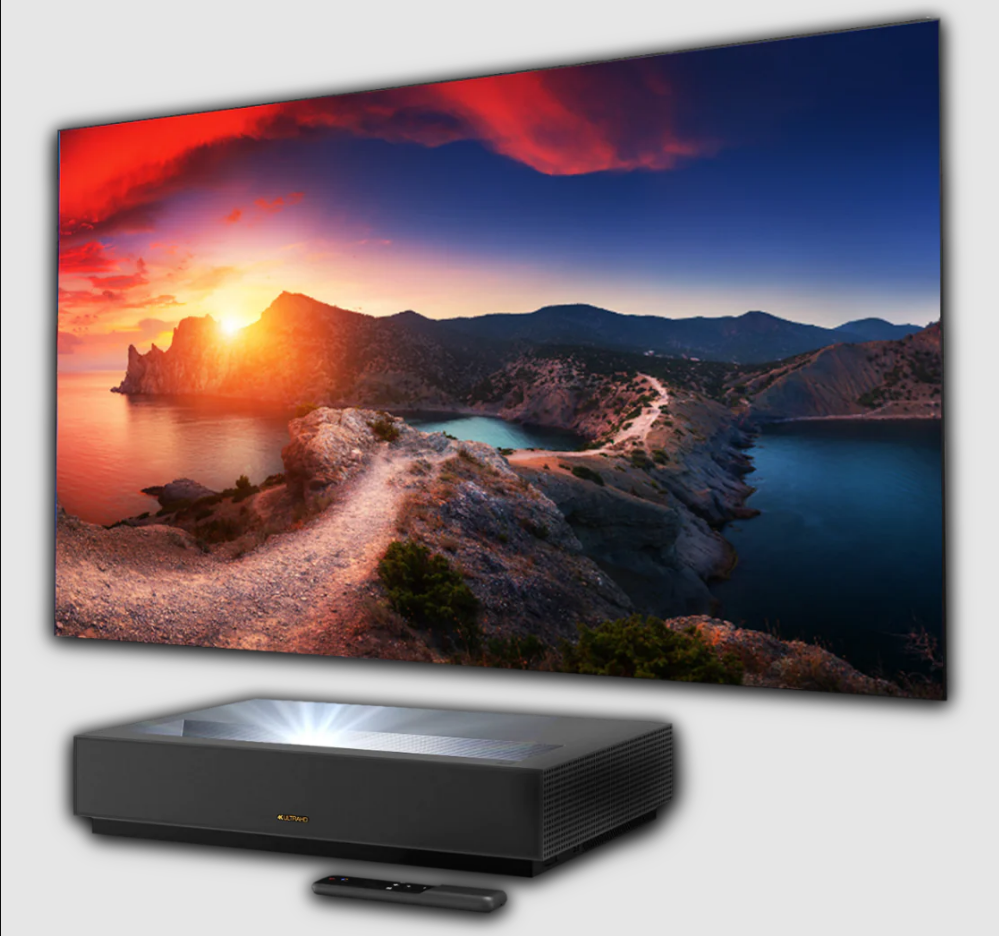
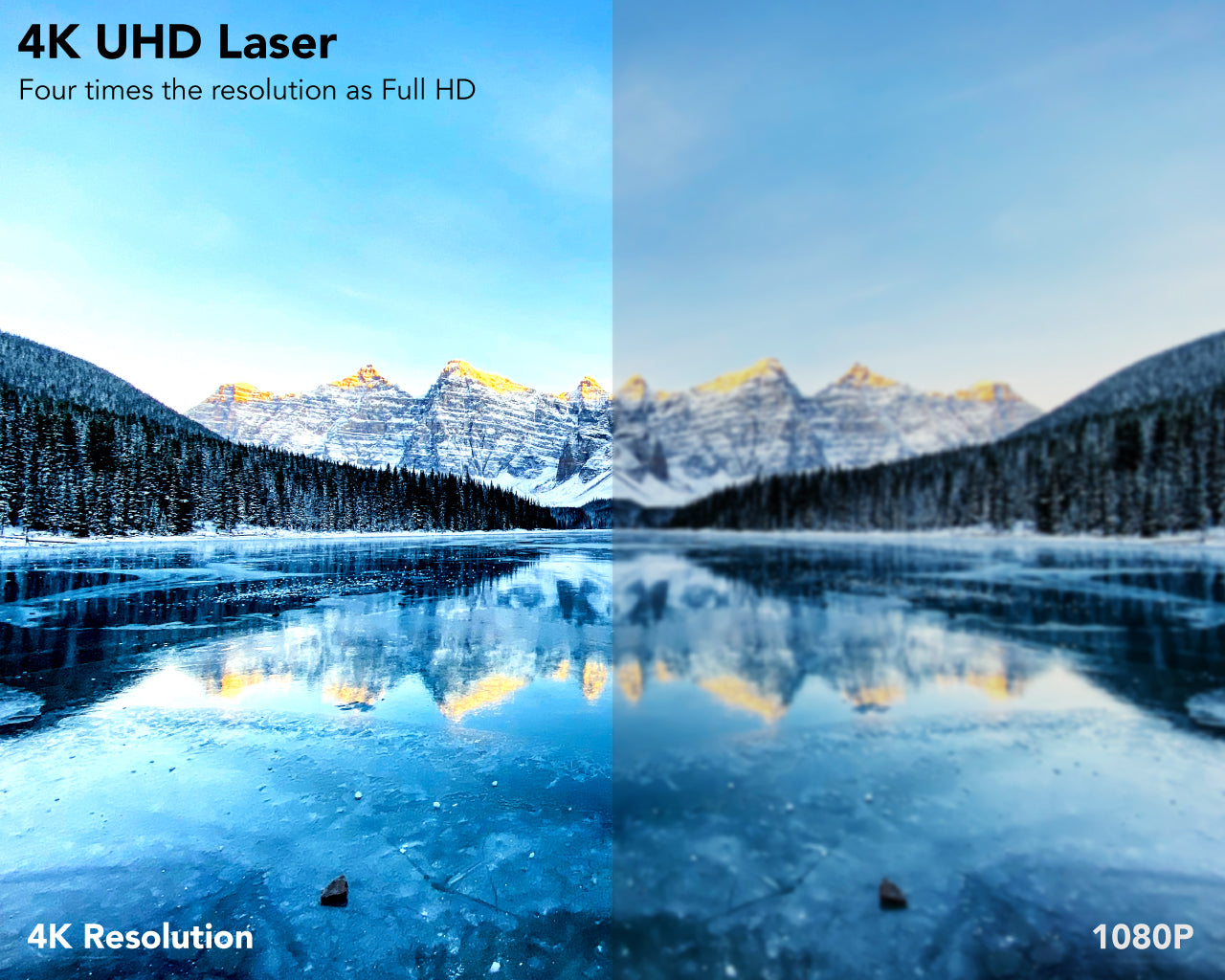
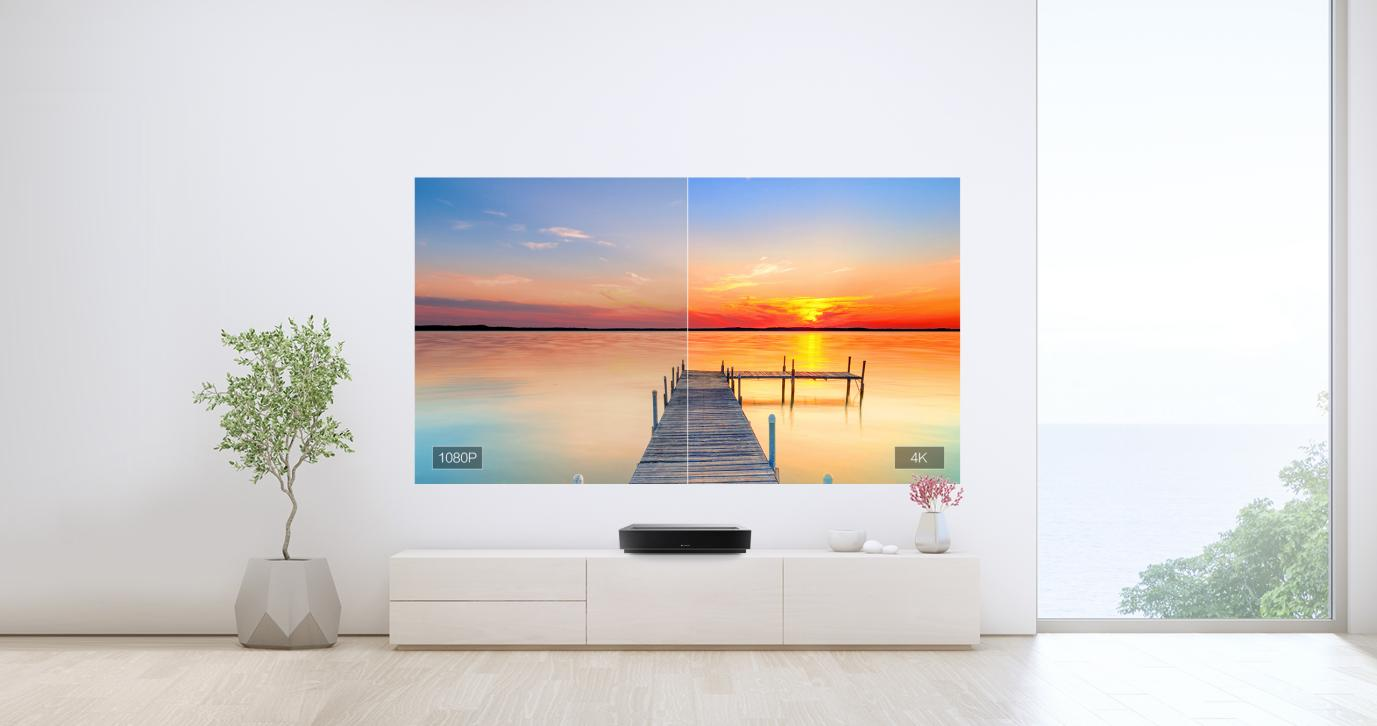
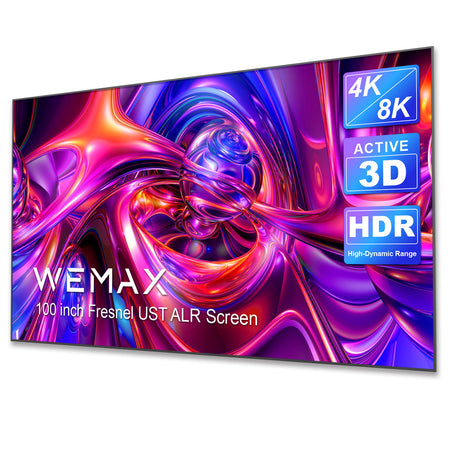
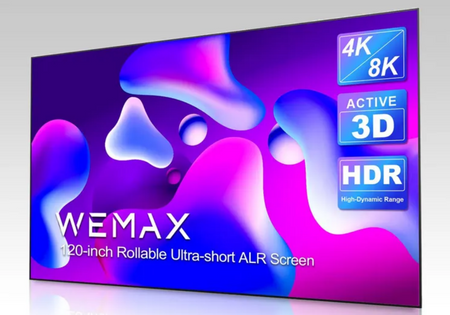
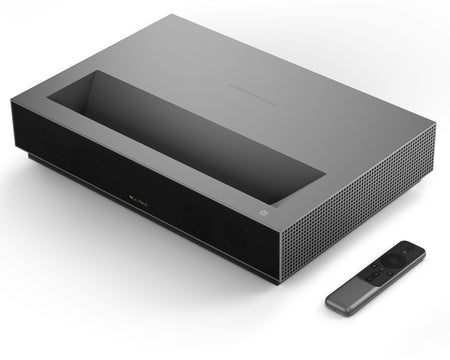
Comments (0)
Back to Tips and Tricks